
Various types of cracked teeth exist, and the appropriate treatment and outcome depend on factors such as the type, location, and extent of the crack. Treatment ranges from cosmetic bonding and fillings, to root canal, post and crown to compelte tooth replacement with a dental implant.
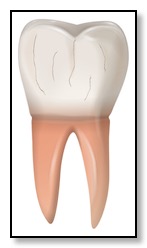
Concerns regarding craze lines are primarily aesthetic or personal preference and do not require treatment unless appearance is a concern.
Can they be fixed? Sometimes craze lines can be resolved with composite fillings or bonding and polishing.
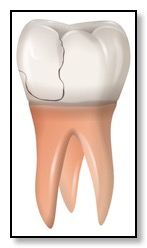
This type of crack seldom damages the pulp and generally does not cause significant discomfort. Although the damage can feel extensive in the mouth, fractured cusps can almost always be saved. Dr. Tsai can restore the damaged tooth by applying a new filling or full coverage crown, thus preserving the tooth structure and resolving any sensitivity.
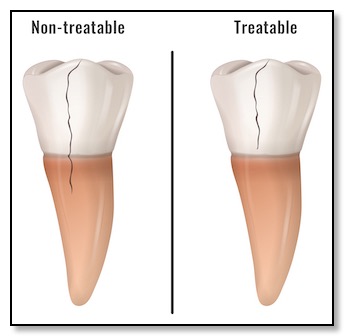
However, if the crack extends below the gum line, it becomes irreparable, rendering the tooth unsalvageable and necessitating extraction, grafting, and a dental implant placed (a dental bridge is sometimes an option as well). Thus, early detection and treatment are very important. An untreated cracked tooth can deteriorate rapidly, ultimately leading to tooth loss and possibly surrounding bone loss. Timely diagnosis and intervention play a pivotal role in saving a cracked tooth.
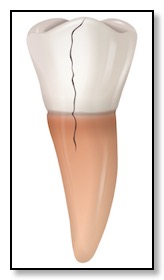
The position and extent of the crack determine whether any portion of the tooth can be preserved. In certain cases, endodontic treatment and a post and crown may be performed to save a segment of the tooth.
In most cases, the split tooth will be extracted, grafted, and a dental implant placed.
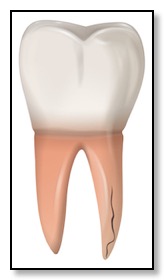
The presence of a vertical root fracture is often discovered when the surrounding bone and gum become infected, or the patient experiences a deep, dull ache.
Treatment may involve tooth extraction, grafting, and a dental implant, although, in certain instances, endodontic apex root surgery may be considered to save the tooth by removing the fractured portion.
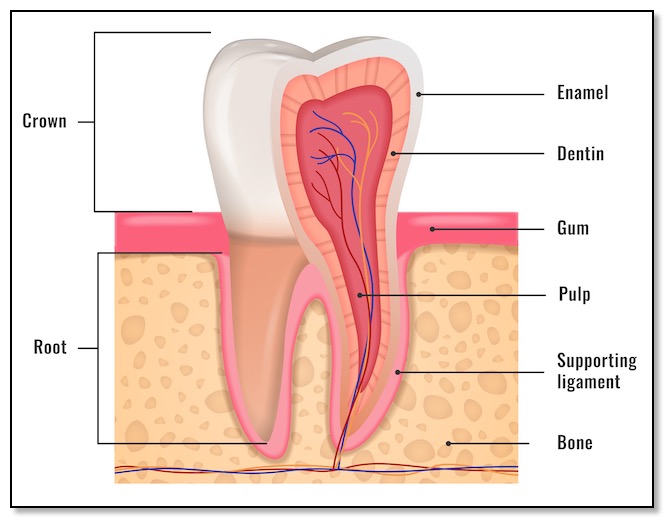
As the crack worsens, the pain associated with the cracked tooth may intensify and even occur spontaneously without any external stimulation. Moreover, extensive cracks can facilitate the infiltration of harmful bacteria into the pulp tissue, potentially resulting in infection. This infection can subsequently spread to the surrounding bone and gum tissues, exacerbating the discomfort and presenting additional oral health concerns.

The second most common form or symptom of cracked tooth syndrome is a constand throbbing or pulsing pain around the base of one of your teeth. Often, if the fracture it caught early enough, the tooth can be saved. If not, we can look at extracting the tooth, grafting the socket and placing a dental implant or a dental bridge.
» Oral Surgeons and Dental Implants
» All Ceramic Dental Implants
» Dental Implants, Bridges, Crowns, & Partial Dentures
» Bone Grafting & Sinus Lifts
» Second Opinions for Dental Implants
» Cracked Tooth Syndrome
» Frequently Asked Questions about Dental Implants
» How to calculate your dental insurance copays?
» Before and After photos of our patients
» Z-SYSTEMS® All Ceramic Dental Implants
Have questions about cracked tooth syndrome, root canals, and dental implants?
email or call us: (650)-583-5880
We'd love to hear from you.
📩
Send us Email
📅
Request Appointment